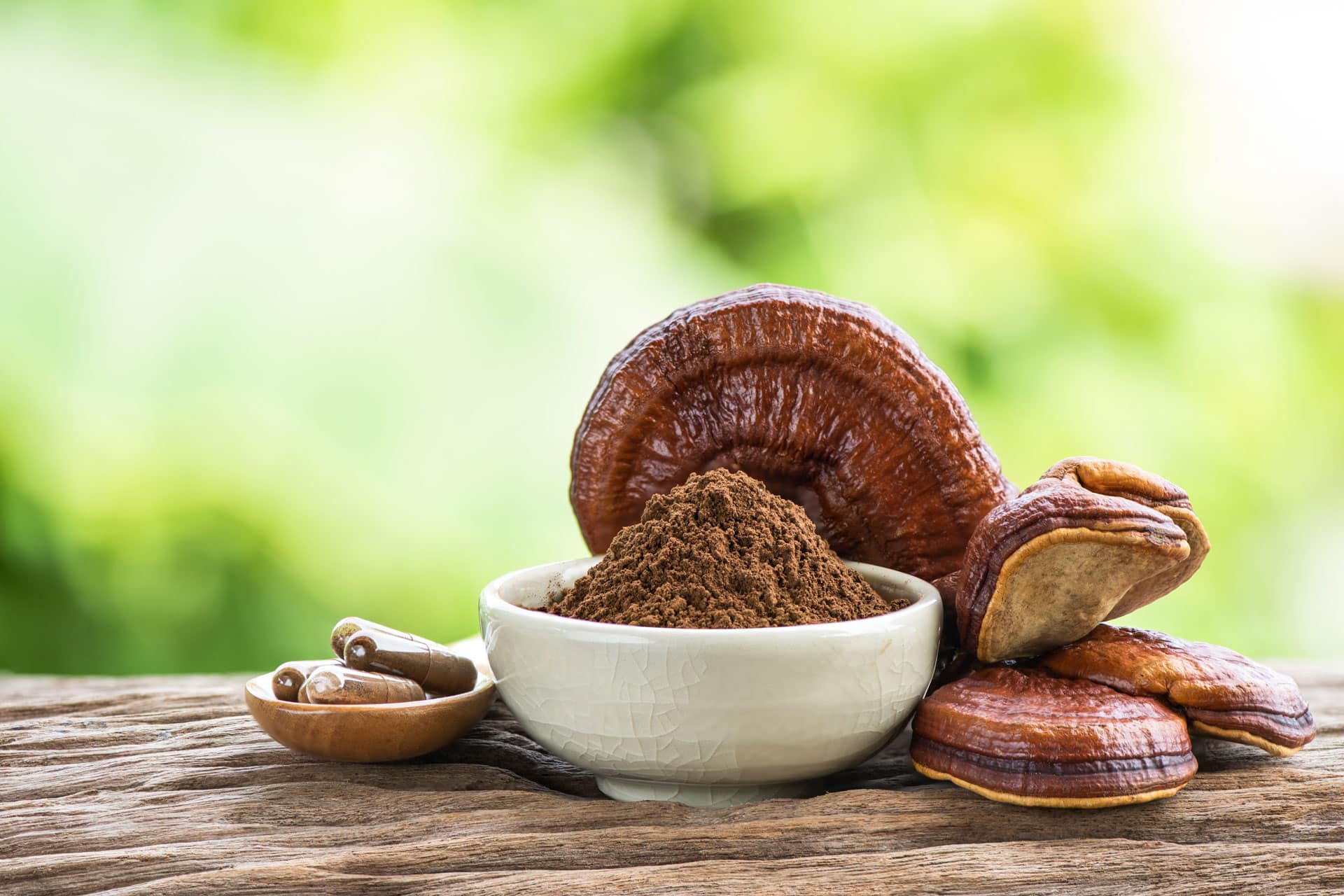The Hericium erinaceus mushroom, also known as lion’s mane, has shown potential in promoting brain health through neurogenesis and aiding the recovery of peripheral nerves by stimulating nerve regeneration and reducing nerve damage.
Table of Contents
ToggleFunctional Mushrooms: Overview and Potential Benefits
Mushrooms, long valued for their taste, are gaining recognition for their nutritional and potential therapeutic properties. With over 2,000 species of edible and/or medicinal mushrooms identified, these eukaryotic, non-photosynthetic, and aerobic organisms that form characteristic fruiting bodies present a vast field for exploration.
Out of the 2,000 edible mushrooms in 30 genera, it’s remarkable to note that 270 species are now considered as potential therapeutic or preventative agents that may ensure wellness in humans.1
These humble fungi are packed with nutrition—rich in proteins, fibers, carbohydrates, vitamins, and minerals—yet remain low in calories and fats, including cholesterol. This makes them an excellent addition to any diet, contributing to overall health and well-being.
The Potential Therapeutic Benefits of Mushrooms for Brain Health
As we age, the specter of neurodegenerative diseases can loom large. These conditions can greatly impact our quality of life, making the search for effective treatments all the more urgent. In the quest for solutions, scientists have turned their attention towards an unlikely source: mushrooms.
The focus is on small molecules found within these fungi that possess the ability to cross the brain-blood barrier. This is a critical trait because it allows these molecules to reach the brain and potentially induce the production of nerve growth factor (NGF). NGF is part of a family of proteins responsible for maintenance, survival, and regeneration of neurons during adult life.
In other words, these mushroom-derived molecules could help stimulate neurogenesis—the creation of new neurons—which is potentially beneficial in combatting neurodegenerative diseases.2 The implications of this research are far-reaching and hint at the enormous untapped potential residing within our humble mushroom friends.
The Role of Functional Mushrooms in Brain Health
When we think about brain health, mushrooms may not be the first thing that comes to mind. However, the world of fungi holds some surprising secrets that could have significant implications for promoting nerve and brain health.
Do you need custom
white label functional mushroom products
for your cannabis business?
SEE WHAT WE CAN DO
Do you need custom white label functional mushroom products produced for your CBD business?
SEE WHAT WE CAN DO
Overview of How Mushrooms Promote Nerve and Brain Health
Several mushroom species, including Hericium erinaceus, Ganoderma lucidum, Grifola frondosa, and Sarcodon scabrosus, have been reported to exhibit neurite outgrowth and neuronal health benefits.3 This means they might support the growth and development of neuron extensions—which are vital for the neuron to function properly—and contribute to overall brain health.
These aren’t just obscure varieties found in a forest’s deep recesses. Many of these are mushrooms you might find at your local grocery store or farmers market. Both Sarcodon scabrosus and Ganoderma lucidum—commonly known as hawk’s wing and reishi mushrooms respectively—are among those reported to have activities related to nerve and brain health.
Discussion on Specific Mushrooms Known to Have Neurohealth Benefits
One particular culinary mushroom stands out for its neurohealth properties—Hericium erinaceus, also known as lion’s mane mushroom. This unique fungus—resembling a shaggy white waterfall rather than a typical cap-and-stem mushroom—has been extensively studied for its potential benefits.
Lion’s mane is not just a feast for the eyes or a gourmet addition to your dinner plate; it may also play a role in maintaining healthy brain function. Its unique compounds have sparked interest among researchers studying neurodegenerative diseases. Stay tuned as we delve deeper into the astonishing world of functional mushrooms and their potential impact on our brain health.
Hericium Erinaceus: A Notable Mushroom for Brain Health
The lion stalks the savannah, a commanding presence with its majestic mane. In the world of mushrooms, we have our own “lion”—Hericium erinaceus or lion’s mane mushroom—a unique fungus that could be just as formidable when it comes to supporting brain health.
Introduction to Hericium Erinaceus (Lion’s Mane) Mushroom
Early research has pointed towards the potential of lion’s mane mushroom in protecting against neurological damage and promoting the growth of nerve tissue. This is particularly significant for people suffering from conditions such as Alzheimer’s disease, multiple sclerosis, and Parkinson’s disease where damage to nerve cells is a characteristic feature.
Through this lens, lion’s mane isn’t just another mushroom but a potentially powerful ally in maintaining and enhancing neurological health.
Exploration of Studies Showing Potential of H. Erinaceus in Promoting Neuronal Differentiation and Survival
Scientists are intrigued by the polysaccharides found in an aqueous extract of lion’s mane. These complex carbohydrates appear to induce neuronal differentiation and promote neuronal survival3—important processes for maintaining a healthy nervous system.
Further studies have shown that extracts from H. erinaceus can induce the expression of neurotrophic factors such as nerve growth factor (NGF) in astrocytes1, which are star-shaped glial cells in the brain and spinal cord. NGFs are crucial proteins that help neurons survive and thrive.
Discussion on Potential Impact of H. Erinaceus on Regeneration of Damaged Nerves
Beyond maintaining neural health, there is evidence that lion’s mane could play a role in healing damaged nerves. One study showed that feeding rats H. erinaceus (300 mg/kg) continuously for 14 days after surgery significantly decreased the size of cerebral infarcts—the areas of tissue that die due to lack of oxygen—just one day after occlusion (blockage).1
This suggests that lion’s mane could potentially support recovery from neural injuries by reducing nerve damage and promoting regeneration—a prospect that offers hope for many neurological patients.
As we continue to explore the deep forest of mushroom science, let’s remember our lion—the humble Hericium erinaceus—as a potential beacon of hope for better brain health.
The Importance of Cultivation and Processing Techniques
Growing mushrooms is more than just a walk in the park—or the woods, as it were. The cultivation and processing techniques used can significantly impact the nutrient profile and medicinal properties of these fungi. And when it comes to neurohealth heavyweight Hericium erinaceus, or lion’s mane mushroom, the stakes are even higher.
How Different Cultivation and Processing Techniques Affect the Neurohealth Properties of Hericium Erinaceus
Just as the taste and texture of a tomato can change based on its growing conditions, so too can the medicinal properties of mushrooms. Indeed, cultivation techniques and conditions can have a significant impact on the bioactive compounds present in Hericium erinaceus.
In addition to cultivation, processing methods also play a crucial role. It has been reported that these methods can affect the neurite stimulatory activity of H. erinaceus. Neurites are projections from neurons that connect them with other neurons—critical for communication within the nervous system.
A study investigating the stimulation of neurite extension by H. erinaceus grown in a hot climate using an in vitro model with NG 108-15 cells demonstrated this very point.1 The results highlighted how environmental factors—and our response to them—can influence the mushroom’s beneficial properties.
Emphasis on Post-Harvest Processing Techniques in Retaining the Mushroom’s Neurite Outgrowth Stimulatory Activity
While cultivation is important, what happens after harvesting—the post-harvest processing—also impacts the quality and potency of lion’s mane mushrooms. Certain post-harvest processing techniques can help retain or even enhance the mushroom’s neurite outgrowth stimulatory activity.
Preserving these benefits is crucial if we’re to unlock the full potential of lion’s mane in supporting brain health. Therefore, attention to detail at every stage—from spore to supplement—is more than just good practice; it’s a necessity for tapping into nature’s vast pharmacopeia effectively.
Exploring the Mechanisms of Hericium Erinaceus
The world of mushrooms is fascinating, full of surprisingly intricate mechanisms and powerful compounds. Let’s delve deeper into the workings of one particular species—Hericium erinaceus or lion’s mane mushroom—and discover how it might enhance brain health.
Discussion on How Hericium Erinaceus Enhances the Activity of Nerve Growth Factor in Neural Cells
As previously mentioned, this unique mushroom has caught the attention of scientists due to its potential neurohealth benefits. One significant way it might contribute to brain health is through enhancing the activity of nerve growth factor (NGF) in neural cells.
NGF is a protein that plays a vital role in the survival and growth of neurons—the primary cells of our nervous system. Extracts derived from H. erinaceus have been shown to boost the activity of NGF in NG108-15 cells, a hybrid cell line used for neurobiological research. This suggests that lion’s mane might have a positive influence on neuronal health and function.
Highlight on the Need for Further Studies to Understand the Mushroom’s Mechanism of Action at Biochemical and Molecular Levels
While these findings are promising, we’re just scratching the surface when it comes to understanding how lion’s mane works its magic. The mechanism by which it influences NGF activity—and its overall impact on brain health—is still not fully understood.
To unravel these mysteries, more research is needed at both biochemical and molecular levels. We need to dissect further into this majestic mushroom—from how its bioactive compounds interact with our cells to how these interactions result in improved neuronal health.
By conducting these studies, we can gain a deeper understanding of H. erinaceus’ potential benefits and hopefully unlock more secrets hidden within this natural wonder. As we continue our exploration, let’s remember that every step brings us closer to potentially game-changing discoveries for brain health.
The Potential Role of Mushrooms in Peripheral Nerve Injury
In the realm of neurohealth, mushrooms aren’t limited to just supporting brain function. Some, like Hericium erinaceus, also show promise in aiding the recovery of peripheral nerves—those that transmit signals between the brain and spinal cord and the rest of the body.
Examination of Hericium Erinaceus’ Role in Promoting the Regeneration of Injured Peripheral Nerves
Hericium erinaceus, our lion’s mane mushroom, seems to have a regenerative effect on injured peripheral nerves. A study showed that daily oral administration of aqueous extract from H. erinaceus fresh fruiting bodies could promote the regeneration of injured rat peripheral nerve during early stages of recovery.4
This finding opens up a new avenue for potential therapeutic use of this mushroom, particularly in conditions involving damage to peripheral nerves.
Discussion on Involvement of Specific Signaling Pathways for Axon Regeneration
The beneficial effects of lion’s mane could be linked to specific signaling pathways involved in axon regeneration. Axons are long, threadlike extensions of nerve cells that transmit electric impulses.
Research has shown that rats with dorsal root ganglia (DRG) ipsilateral crush injury who were treated with H. erinaceus extracts expressed higher immunoreactivities (immune responses) for Akt and ERK1/2—signaling pathways related to cell survival and growth—compared to a negative control group.5
These findings suggest that H. erinaceus may stimulate nerve regeneration through these specific pathways—a crucial step in understanding its mechanisms.
Conclusion: Emerging Potential and Continued Research
As we wrap up our exploration into the fascinating world of functional mushrooms and their potential benefits for brain health, it’s clear that there’s still much to learn. But what stands out is their potential: from supporting general brain health to promoting nerve growth and potentially aiding peripheral nerve recovery.
While research continues to untangle the intricate mechanisms behind these benefits, one thing is sure: incorporating functional mushrooms like Hericium erinaceus into your diet could be a step toward improved brain health.
So why not give it a try? Let’s embrace these natural wonders as part of our journey towards better health and well-being.









